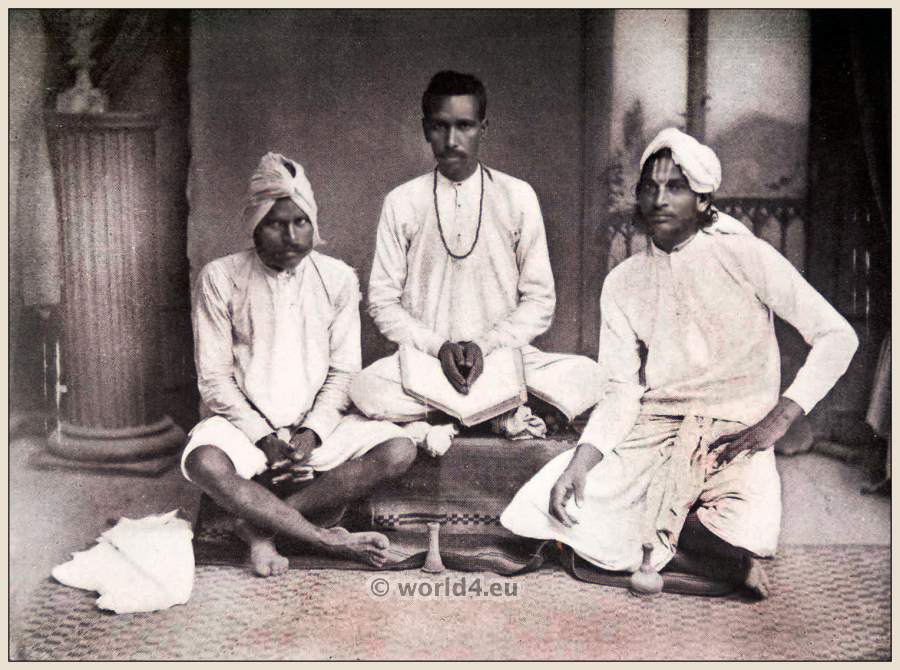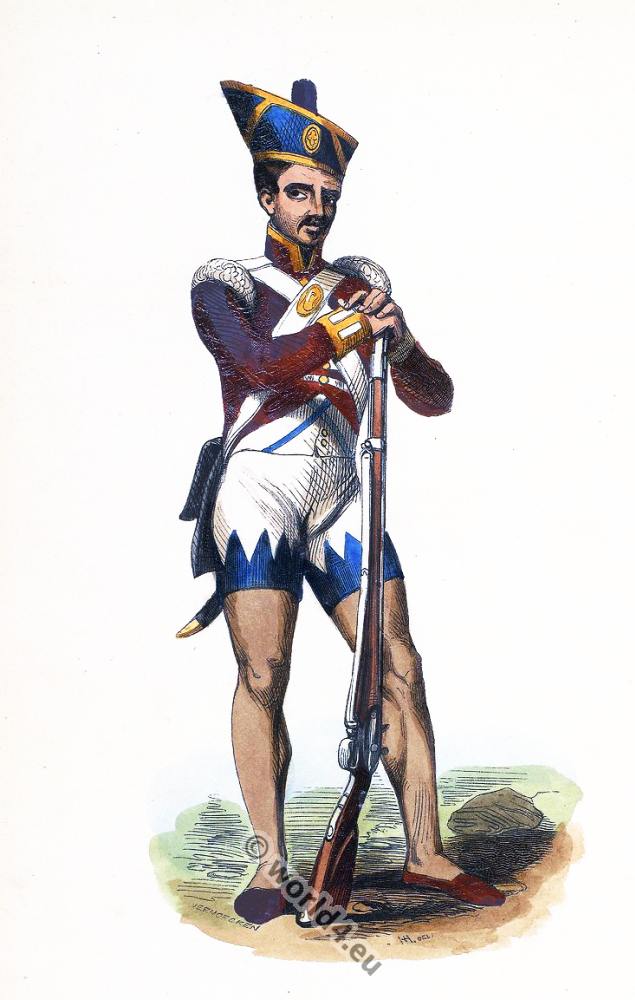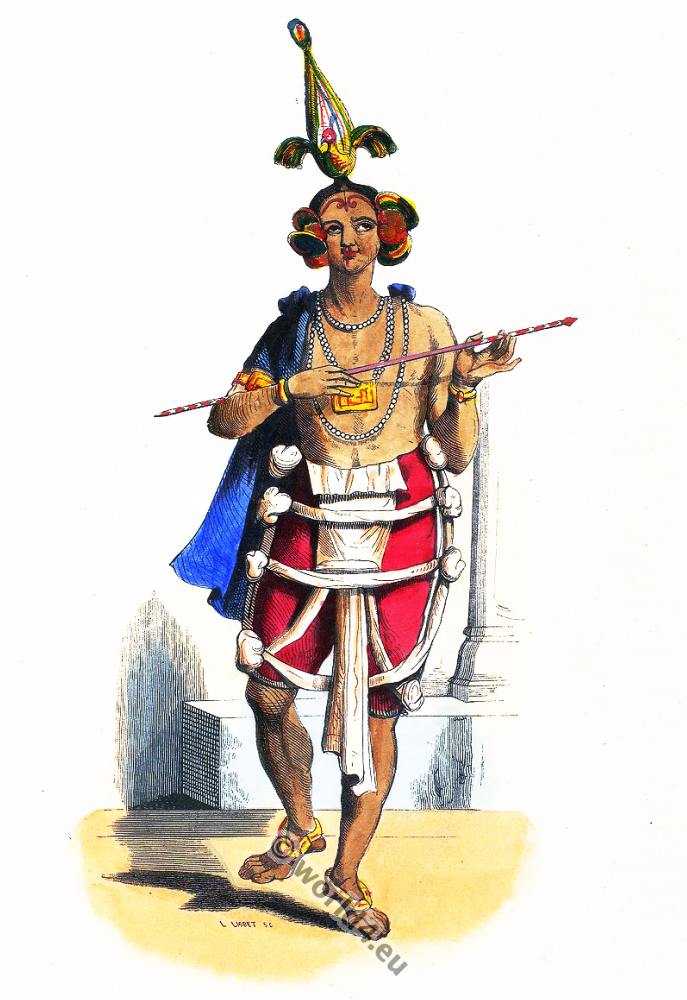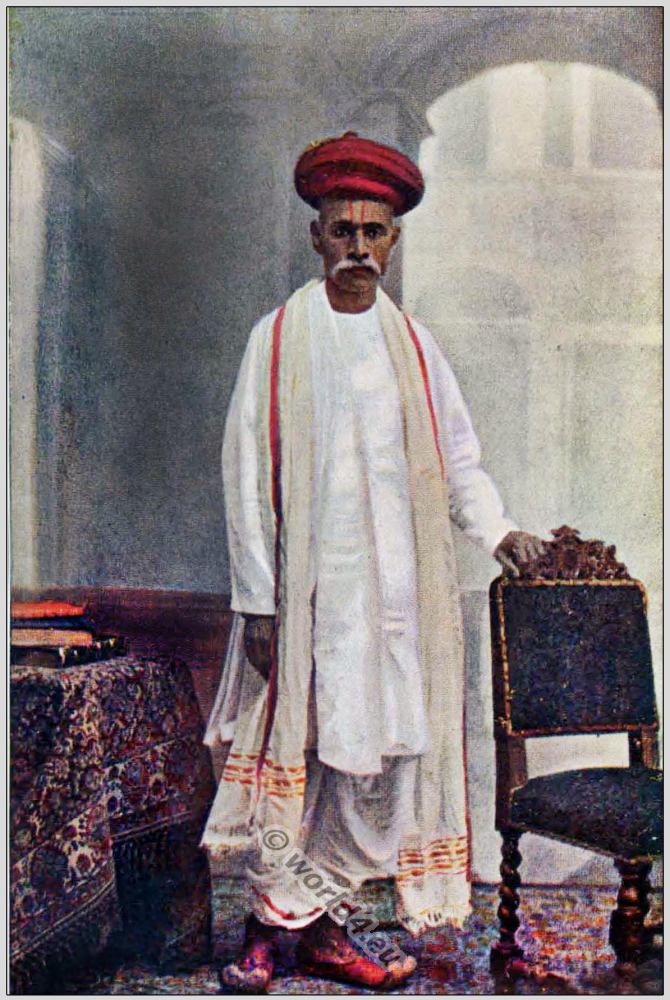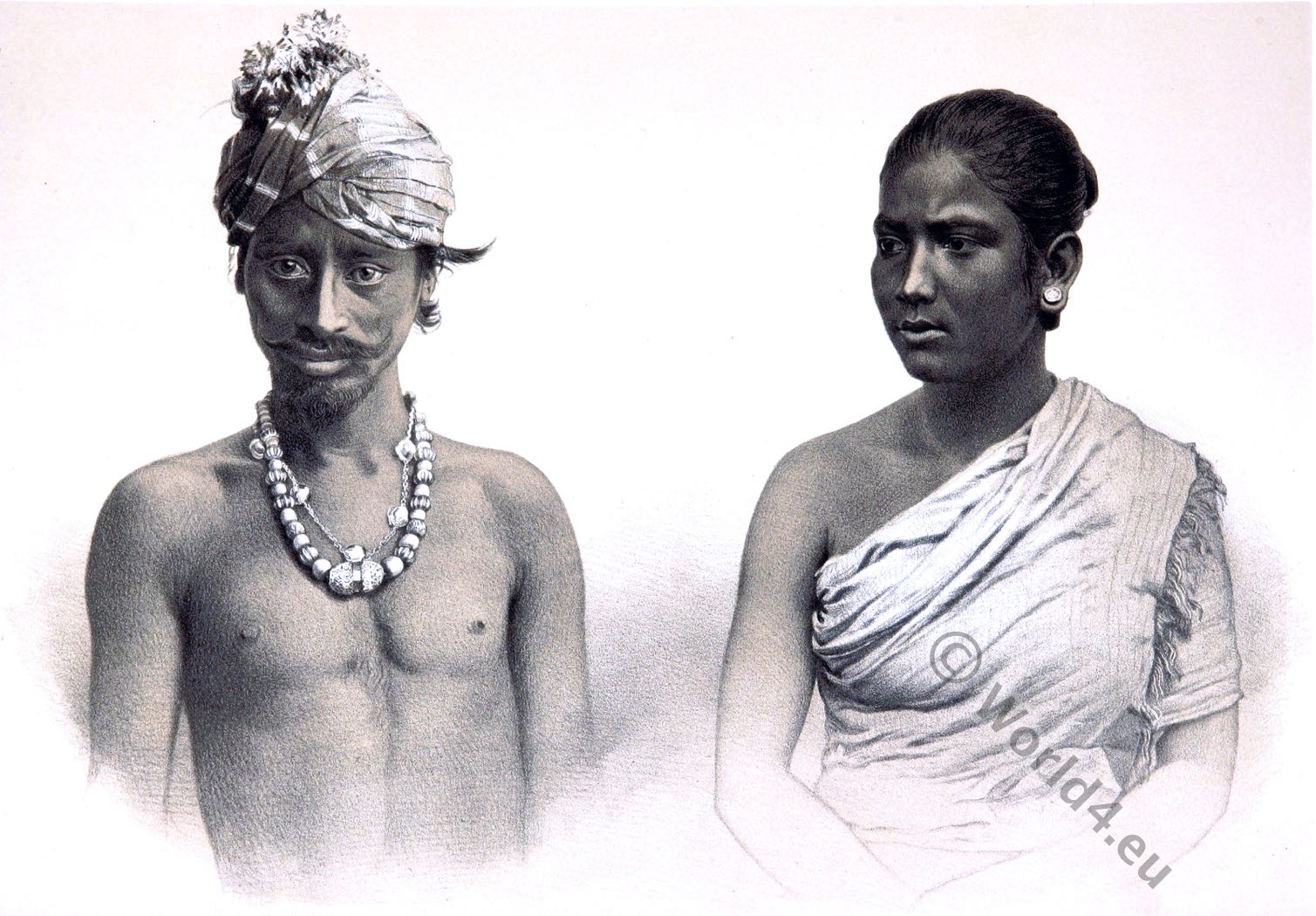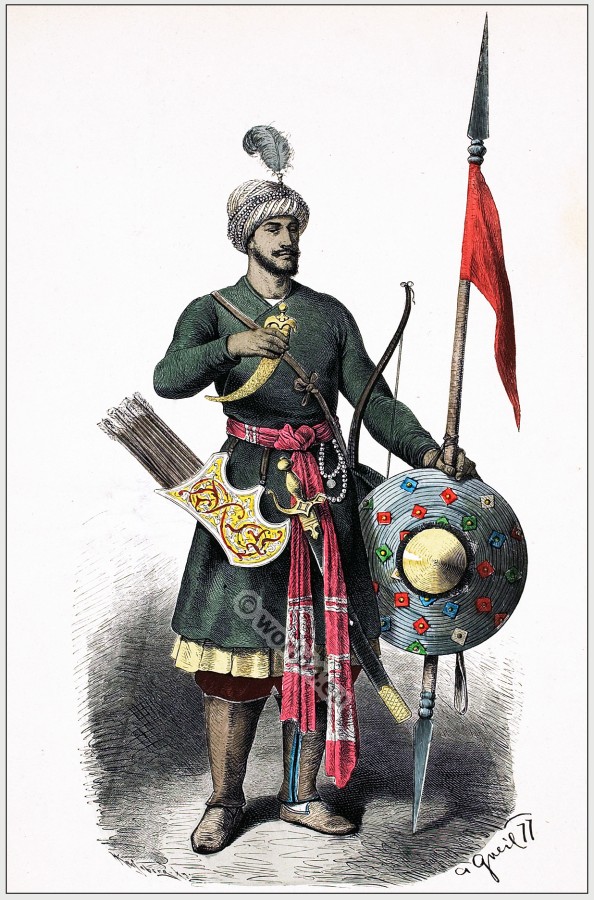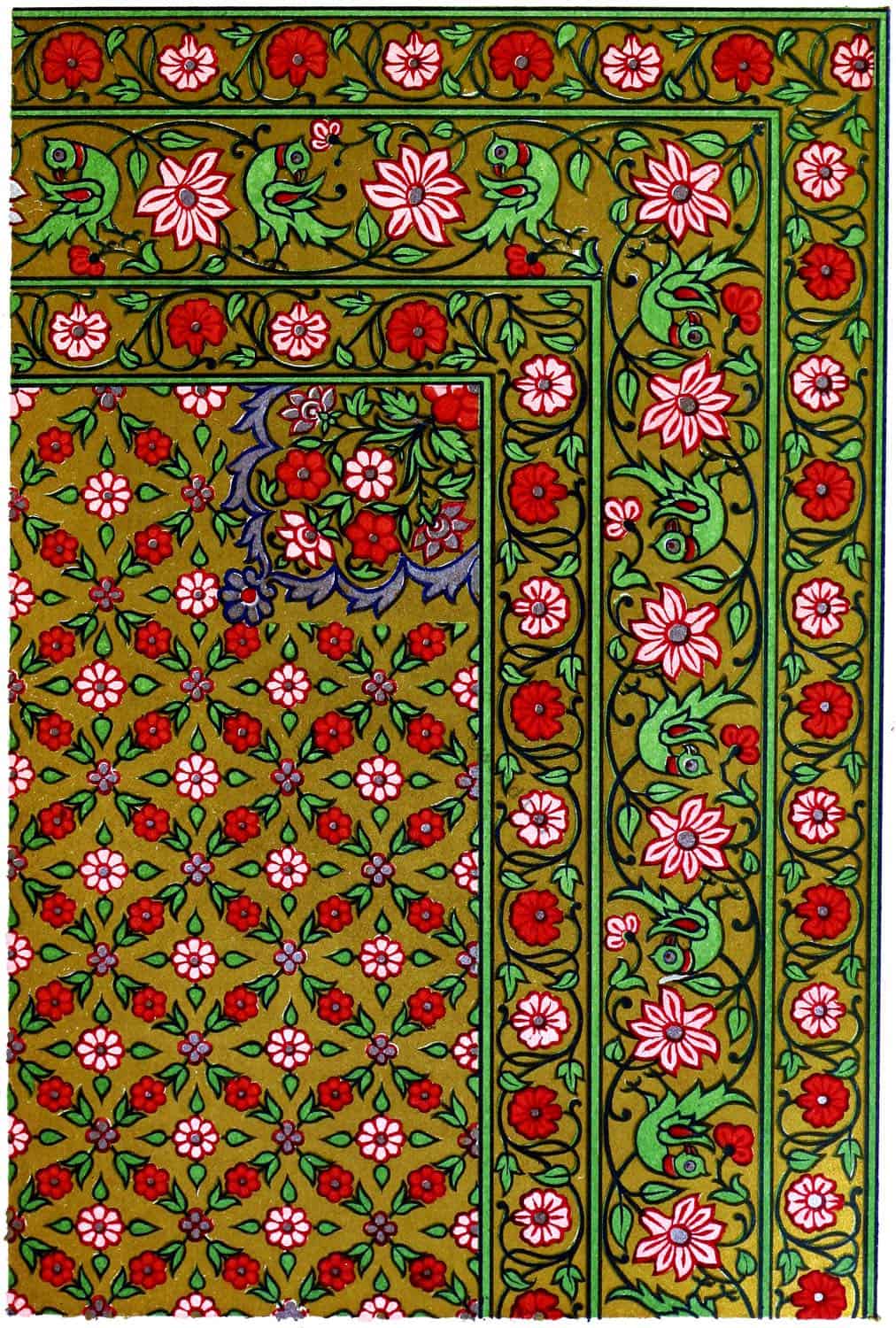
HINDU PRAYER-CARPET, IN SILK AND GOLD BROCADE.
Museum of Ornamental Art.
Amongst the beneficial results of the Great Exhibition of 1851, probably nothing more important can be specified, than the influence exercised on industrial design, by the splendid collection of Oriental manufactures exhibited on that occasion. The superlative artistic merit of many classes of objects, more especially the textile fabrics of India, was then, perhaps, for the first time fully recognized and it was at once; admitted, that in respect of beautiful and ingenious arrangement of patterns, and harmony of colour, these Asiatic fabrics were infinitely superior to anything Europe had to show.
In these the rule was excellence: the obvious and undeniable beauty with which observers of every condition were at once struck, when inquired into by the artist, was found to be based on a complete and well-defined system of design; and it became evident, that there were traceable in these works certain universally followed laws or rules, which, when formularized, assumed the force of obvious truths.
One fundamental principle it may be allowable to allude to here, and it cannot be better expressed than in the words of Dr. Waagen:— “In the fabrics of India, the correct principle already laid down, namely, that patterns and colours should diversify plain surfaces, without destroying or disturbing the impression of flatness, is as carefully observed as it was in the Middle Ages, when the decoration of walls, pavements, and carpets, was brought to such perfection by the Arabs. But it is not only the observance of this principle which distinguishes the Indian stuffs in the Exhibition they are; remarkable for the rich invention shown in the patterns, in which the beauty, distinctness, and variety of forms, and the harmonious blending of severe colours, called forth the admiration of all true judges of art.”
And Mr. Owen Jones has further well remarked:— “We have here no artificial shadows, no highly-wrought imitations of natural flowers, with their light and shade, struggling to stand out from the surfaces on which they are worked, but conventional representations founded upon them, sufficiently suggestive to convey the intended image to the mind without destroying the unity of the object they are employed to decorate.” And again, “With them the construction is decorated: decoration is never, as with us, purposely constructed.”
The Prayer-Carpet forming our present illustration, manufactured at Ahmedabad, was chosen for the Museum of Ornamental Art as one of the most faultless of these Indian productions. Although rich and gorgeous in the extreme, nothing can be further removed from gaudiness. The two principal colours, red and green, harmonies naturally with each other, and are further subdued by the darker lines with which the ornamental details are edged whilst the points of silver; equally distributed over the surface, not only form a beautiful contrast with the richer metal of the ground, but serve to relieve the entire design from heaviness, without detracting from the sober richness of the general scheme of colour.
Source: The treasury of ornamental art, illustrations of objects of art and vertù by Sir John Charles Robinson. Marlborough House (London, England), 1858.
Continuing
Discover more from World4 Costume Culture History
Subscribe to get the latest posts sent to your email.

